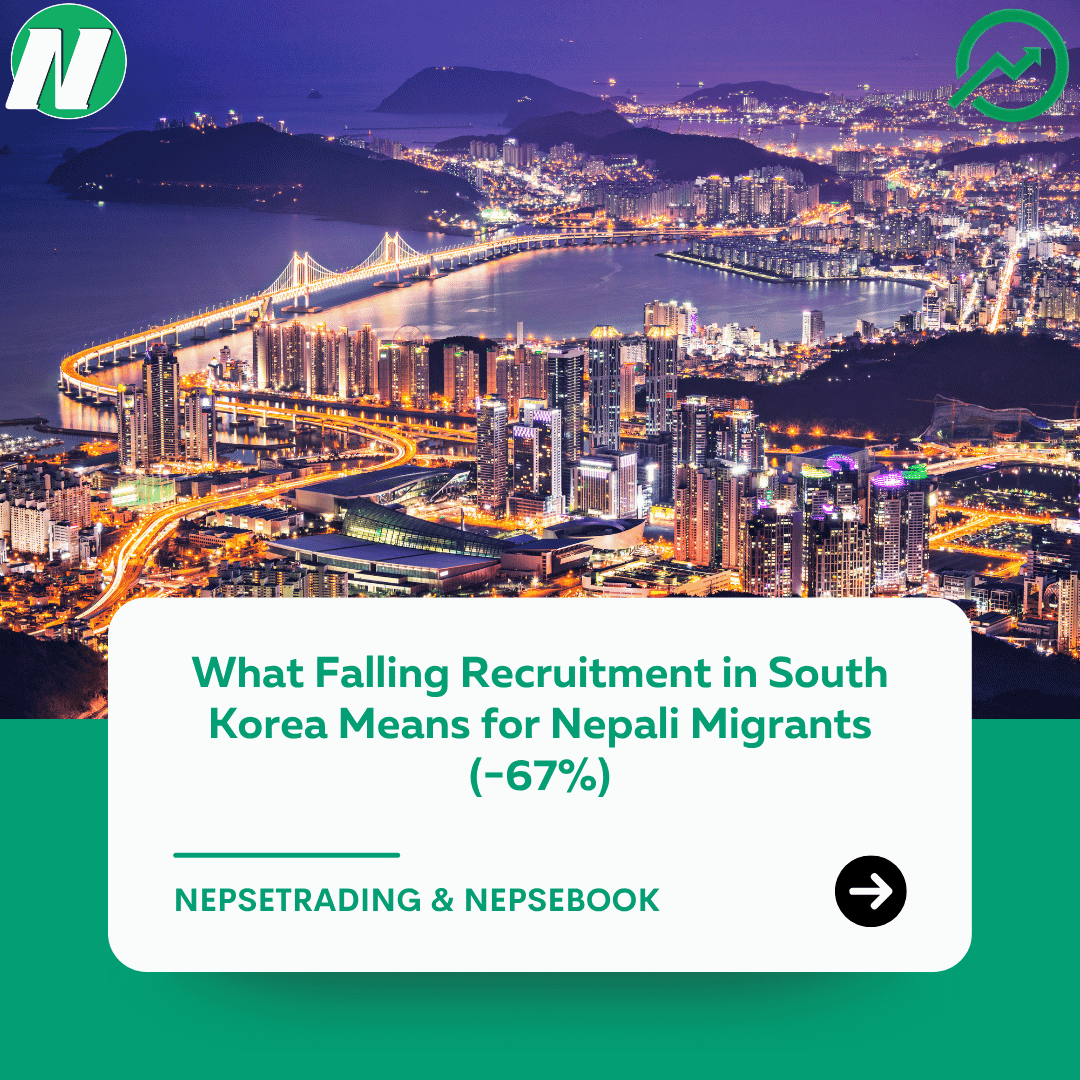By Sandeep Chaudhary
What Falling Recruitment in South Korea Means for Nepali Migrants (−67%)

South Korea, once seen as a high-quality destination for Nepali migrant workers under the Employment Permit System (EPS), has reported a sharp fall in new worker approvals. According to the Department of Foreign Employment, only 867 Nepali workers went to Korea in the first month of 2025/26, compared to 2,643 in the same period last year — a steep 67.4% decline.
The EPS program, which has long been popular for its relatively better wages, regulated contracts, and safer working conditions compared to Gulf nations, is now facing a downturn. Experts point to several reasons:
Policy restrictions and quotas under EPS, which limit the number of workers per year.
Korea’s aging labor demand pattern, with sectors shifting more toward automation and technology.
Language and skill barriers, as EPS requires rigorous Korean language tests and technical assessments, making entry difficult compared to low-skill jobs in Gulf countries.
Growing competition from other labor-sending countries, reducing Nepal’s share in Korea’s limited labor intake.
For Nepali workers, this decline signals reduced opportunities in one of the few destinations offering secure jobs and higher savings potential. Many who previously hoped for Korea may now be redirected toward the Gulf or Europe, where conditions are often less regulated.
Analysts warn that Nepal must invest more in language training, skill development, and better coordination with South Korean authorities to regain momentum in this market. Without such measures, the EPS pipeline may continue to shrink, pushing workers back to less favorable destinations.









